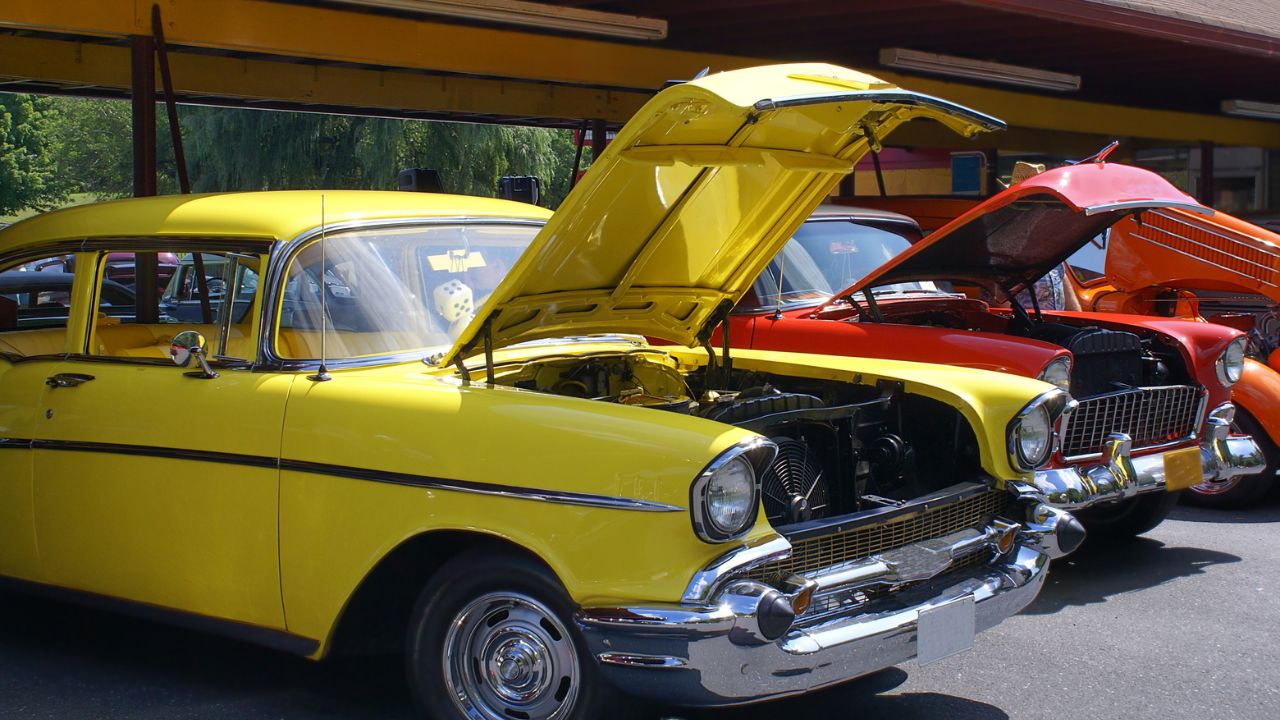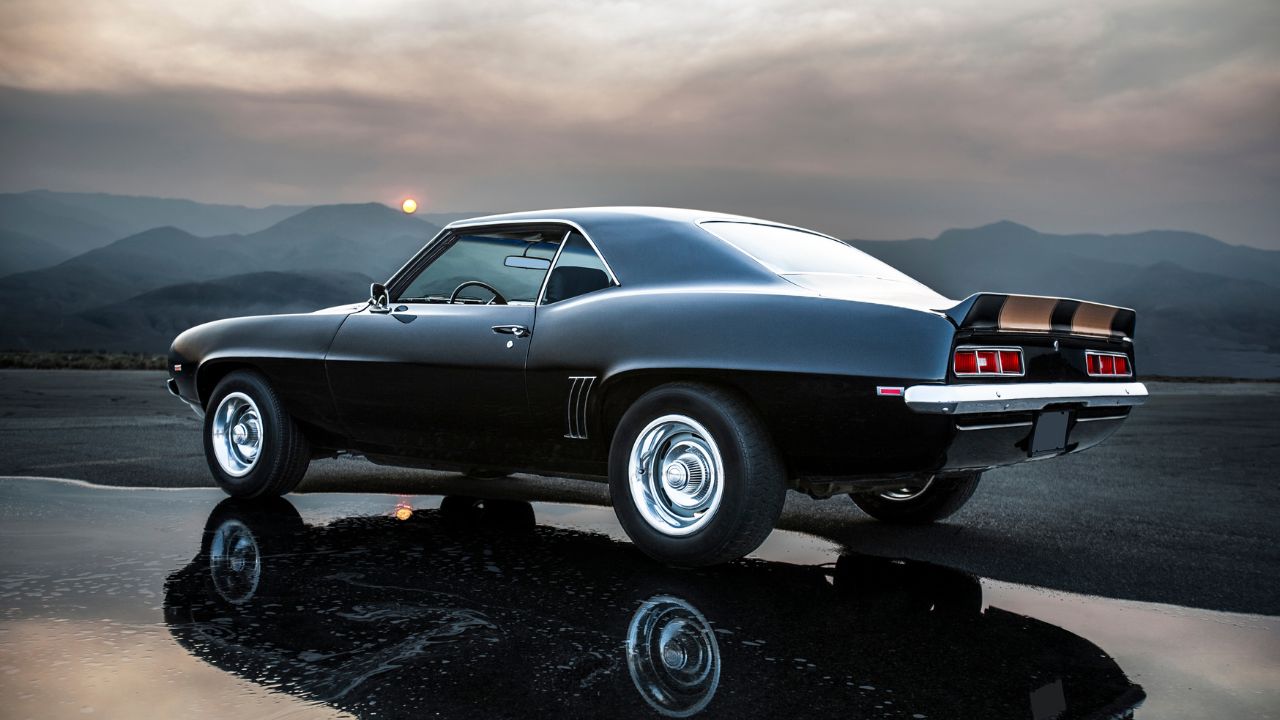
The '90s were a great period for cars. Collectors of '90s vehicles are finding plenty to collect. From the Ford Escort RS Cosworth to the Toyota Supra, this article will highlight some of the hottest cars on the market. We will also be looking at the Ford F-150 SVT Lightning, and the Honda NSX. These cars will drive you crazy, no matter how expensive they are.
Ford Escort RS Cosworth
Ford Escort RS Cosworth - This is a WRC special. It was designed to show Subaru what they could do in the World Rally Championship. The original EscortRSCosworth cost $186,000 and produced 210bhp. However, enthusiasts have been able to restore and drive the car again.
The Escort RSC Cosworth was originally made for rallying but it was also available as a road-going vehicle. Although the Escort RS Cosworth came at a high price, its performance was unmatched. In fact, insurance premiums rose to the point that the car was too powerful. Due to its notorious turbolag, the car was extremely costly. It was still sold in large numbers, with more than 7000 units. It's a collector's favorite.

Toyota Supra
The Toyota Supra's exterior design was dramatically altered in the 1990s. The interior of the Toyota Supra was updated with new colors including dark gray and shadow grey. Also, the steering wheel was redesign. The dash got a new look. It now has 6.5-inch speakers and an even larger center speaker cover. The steering wheel received an airbag that took up the entire center. The original 3-spoke steering wheel was removed and replaced by a 4-spoke model with the Supra script.
The Toyota Supra was distinguished from its contemporary counterparts by many features, including the aerodynamic design. A new body style was developed for the fourth generation Supra. The original pop-up headlamps have been replaced by LED units. Additionally, the rear wing is now optional. This was the Supra's trademark feature. This Supra version was much more powerful than its predecessor. The engine's turbocharged turbocharger still puts out more power then its predecessors.
Honda NSX
The Honda NSX remained largely unchanged throughout its existence for more than a decade. The 2001 model got a few cosmetic improvements, including a new kit that included fixed xenon halogen headlights. Also, the suspension was modified and larger tires and wheels were added. You could also get the car in different colors. Owners could even choose a matching interior. The NSX was not able to live up the hype it got from its fans.
Honda NSX's mid-engine layout caused it to be prone oversteering at high speeds and when cornering. Honda created the Type R (for track driving) and the Type S to address this problem. These cars were both more powerful and heavier than their predecessors. The Type R, Type S and Zero versions had a Zero model, which didn't have a navigation system or AC.

Ford F-150 SVT Lightning
In the 1990s, the Ford F-150 SVT Lightning was a luxury pickup truck built on the second-generation body style. It featured a naturally aspirated, 5.4-liter V8 engine with an Eaton supercharger. The engine was capable of producing 360 horsepower and 440 pounds-feet of torque. It was also backed by an automatic 4R100 transmission. Lightnings of the first generation were not available in a factory-equipped configuration, but could be ordered as an option. The second-generation model had a tubular upper grille, coilsprings in the front, and a leaf spring package in rear.
The first-generation truck used twin beam coil springs on the front and leafsprings at its rear. A Monroe Formula GP-shock system was also available. The truck with a lower ground clearance was one inch higher in front and 2.5 inches at the back. This small truck is ideal for those seeking speed and power.
FAQ
What is the average time it takes to become a mechanic?
A mechanic is only an expert if they have years of experience. A professional mechanic will teach you how to fix cars.
You'll have to spend time at a garage learning all you can about cars and mechanics. You will need to read books on mechanical engineering and car design.
Additionally, you will need to attend an auto school.
It's important to start early. Don't wait until you're older to begin studying automotive technology. Start studying automotive technology now to become a mechanic.
To work as an automotive mechanic, do I need a degree? Can I study part time?
Although it's not mandatory, a degree can help. Employers are more likely to hire candidates who have completed a complete degree. It shows that you've worked hard and are determined to succeed.
This doesn't necessarily mean you can't continue to work while studying. Some universities allow students the flexibility to finish coursework during summer vacations and resume their studies later in year. Others let students take classes part-time throughout the year.
What is the difference in a mechanic and an auto technician?
Although they may be similar, they are not identical. A mechanic repairs cars and an automotive technician performs maintenance.
A mechanic should be able to do simple tasks quickly and have good manual dexterity. A mechanic must be able diagnose and fix problems quickly and accurately.
An automotive technician is required to have more technical knowledge than a mechanic. They need to be able use tools such drills and wrenches, and read blueprints.
They should be able safely to perform complex procedures. They should also be familiarized with the different types of engines as well as electrical systems.
They must also be able comprehend how the various parts interrelate with one another.
As a result, a mechanic usually earns less money than an automotive technician. Both jobs offer many possibilities.
What qualifications do I need to become a mechanic?
A series of exams is necessary to become a mechanic. These exams include:
-
A general knowledge exam
-
Practical exam
-
An apprenticeship test
These tests are intended to make sure you have a solid understanding of the basics of mechanics before you can start your career as a mechanic.
After passing these tests, you will be eligible to become a mechanic. But, you will still need an apprenticeship. This will require you to learn the trade.
To learn all you can about vehicle repair, you will need to take classes and workshops. It will be necessary to work alongside experienced mechanics.
You'll need a high level of concentration and attention to detail if you want to succeed as a mechanic. You will need to pay careful attention to every aspect when repairing vehicles.
To become a good mechanic, you need patience and persistence. This may not be the career path that you want if you aren't able to follow directions.
However, if you love cars or enjoy working on them, you might be happy in this field.
How long is an automotive mechanic apprenticeship
It takes three years to complete an apprenticeship as an automotive mechanic. The apprenticeship includes two years studying at school and two more as an apprentice. The first year of training is spent in the trade. This includes theory and practical skills as well as safety procedures. You'll also learn how tools can be used safely and efficiently during this year. After the completion of the first year, you will spend another year on the job training. Here you'll gain valuable experience in different trades. These years will offer you the opportunity to attend formal classes.
The last year of your program will be spent earning qualifications and becoming certified. These include NVQs (National Vocational Qualifications), that are given after passing specific industry exams. In addition, there are HNCs (Higher National Certificates) that cover general subjects such as management, business administration, and customer service. Finally, there are City & Guilds certificates that are offered for those who wish to become qualified in certain trades.
Statistics
- According to the BLS, the median annual salary for automotive service technicians and mechanics in the United States was $44,050 in May 2020. (uti.edu)
- The U.S. Bureau of Labor Statistics (BLS) reports that the job outlook for automotive service technicians and mechanics is expected to decline by 4% from 2019 to 2029. (indeed.com)
- According to the BLS, total auto technician employment is expected to exceed 705,000 by 2030. (uti.edu)
External Links
How To
How to diagnose your vehicle properly for repair
The symptoms of your vehicle are the first thing you need to look at in order to determine whether it is in dire need of repairs. Follow these steps to properly diagnose your vehicle.
-
Check engine lights. Make sure to check all dashboard indicators like the engine light indicator (oil pressure gauge), the battery indicator (battery light indicator), and the RPM indicator (rpm gauge). If any of these indicators have been flashing continuously for several days it could mean that there is something wrong with your vehicle.
-
Take a look at the treads. Tires can become worn and cause problems in handling and braking. You should also inspect the wheel treads. They should be clean and smooth. You can do this by taking off the wheels. Check the tread condition with a flashlight.
-
Check the level of brake fluid. You should always keep track of the amount of brake fluid in your vehicle. This helps ensure that your brakes operate properly. Low brake fluid levels can cause brake failure when you apply pressure.
-
You should test the suspension system. The suspension system in vehicles absorbs vibrations and shocks. It allows for better control, smooth acceleration, and deceleration. You might notice a wobbly feeling or uncontrollable shaking in your vehicle if it has a problem with its suspension. If you are unsure if your vehicle is suffering from a suspension problem, put weight on the front and rear axles to check the movement.
-
Examine the steering wheel. The steering column connects the steering wheel to all other components of the vehicle. Steering columns can be damaged by accidents. Replace it if your steering column feels loose or unsteady.
-
Observe the exhaust pipe. The exhaust pipes transport gases from the combustion chamber to outside. You can let harmful fumes into your home if your exhaust pipes crack or leak. You should also fix any bent tailpipes immediately.
-
Take a look under your hood. To check for unusualities, look under the hood. You could have fluids leaking from the engine. Also, professional technicians should be called if you detect an unusual smell coming out of your engine compartment.
-
The air filter should be checked. The vehicle's outside environment may cause the air filter to collect dust and debris. Vehicles that have a dirty air filter will not run well. Replace your air filter regularly.
-
The fan belt should be checked. Your vehicle's fanbel connects the engine and transmission. If the fan belt fails, the engine won't start. It is very easy to replace your belt. All you need is a screwdriver and some pliers.
-
Make sure you inspect the radiator hoses and hoses. The radiator hose transports water from radiator to engine. It can cause hot liquid to leak onto the engine if it is damaged or cracked. To repair the hose, you will only need to use a pair needle-nosepliers and a wire brush.
-
Be sure to inspect your windshield wipers. Windshield wipers work by using electricity to remove rain and snow. If they stop functioning, they can leave streaks in your window glass. You can fix the problem by changing the washer fluid.
-
You should inspect the cables. The batteries provide power to the electrical systems within your car. Make sure you disconnect the negative cable before replacing batteries. Failure to do so can damage your alternator.
-
Pay attention to your headlights. Headlights illuminate the road ahead of you. It can lead to poor visibility if they aren't working properly. Check the bulbs to see if they've burned out.
-
Make sure you have your lights on. When you approach them at night, the lights warn other drivers. You may be distracted by the light and end up in an accident.
-
You should inspect your brakes. Before you collide with another vehicle, brakes will slow down the car. You could lose control of the car and cause a crash if they don't work properly.
-
Check the oil regularly. The oil keeps your engine well lubricated. This oil helps to prevent metal parts becoming too worn out. It is recommended to change the oil once a month.